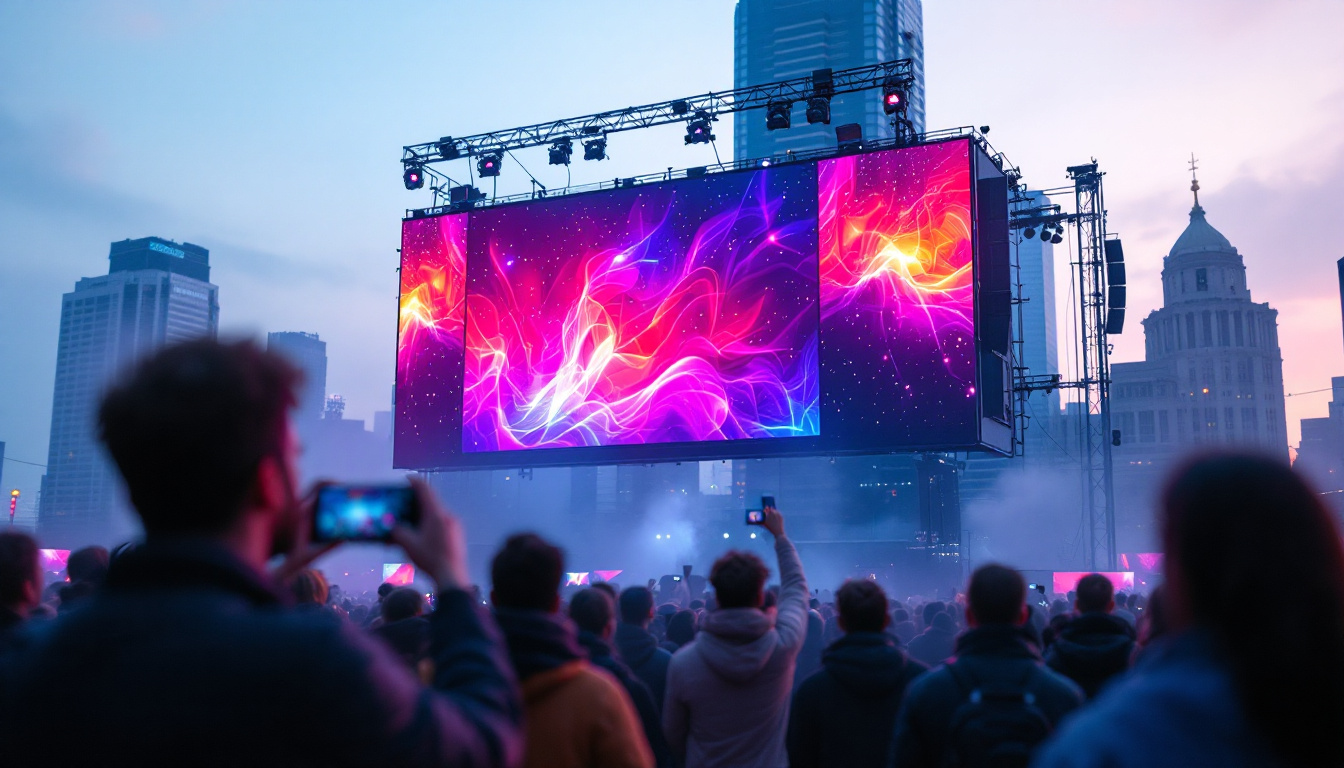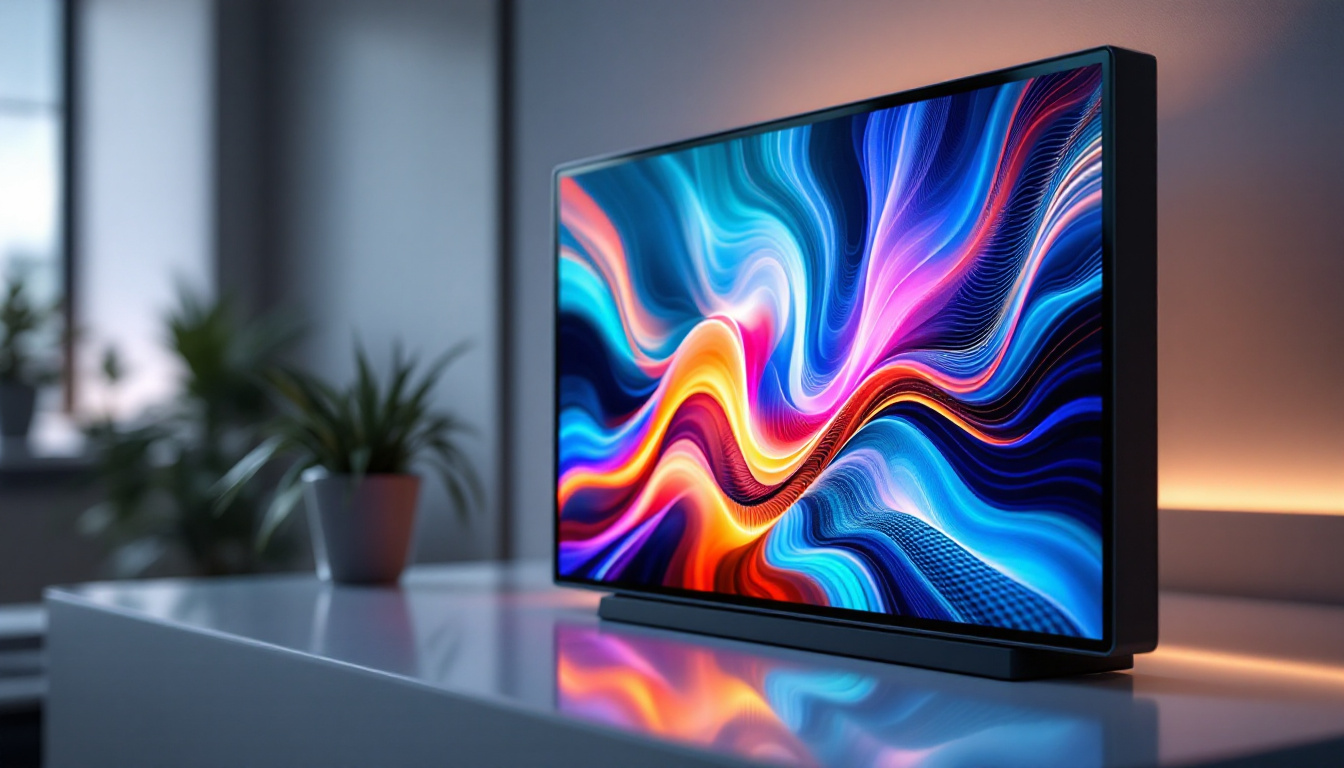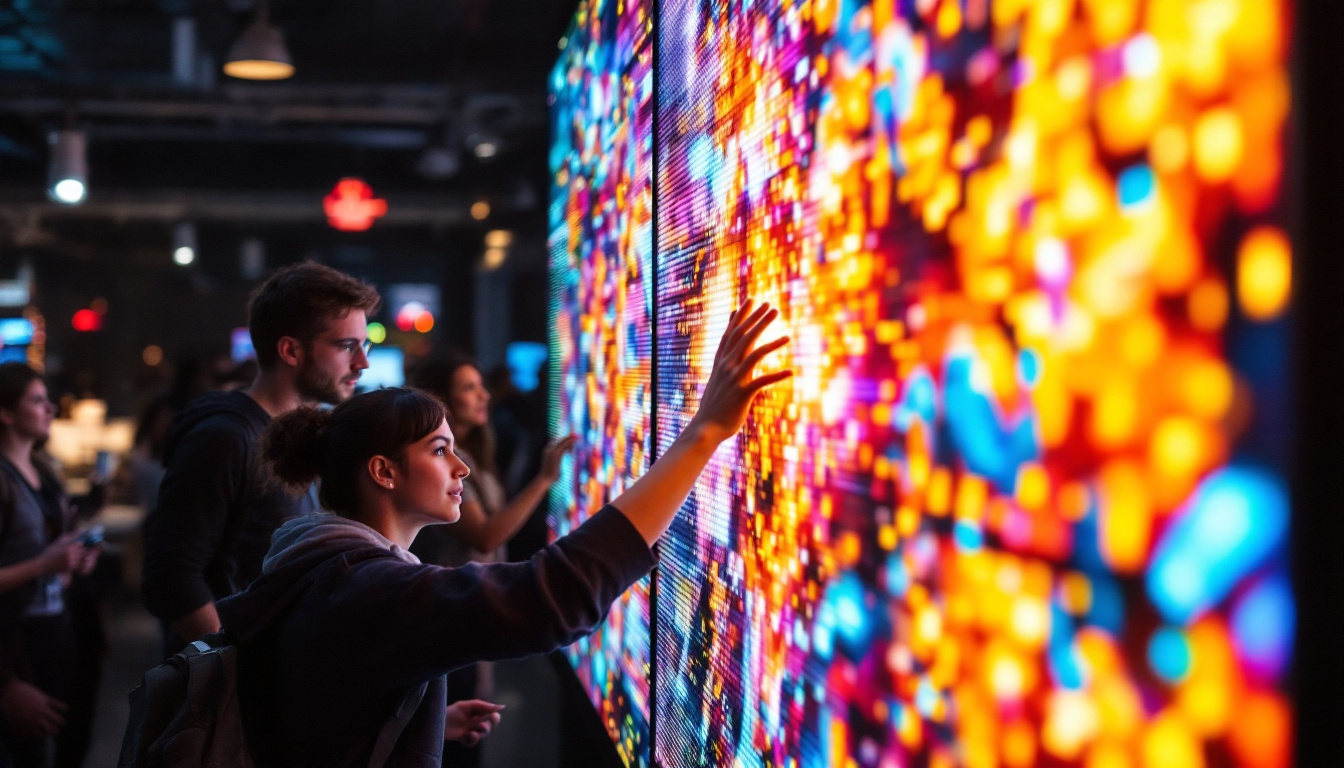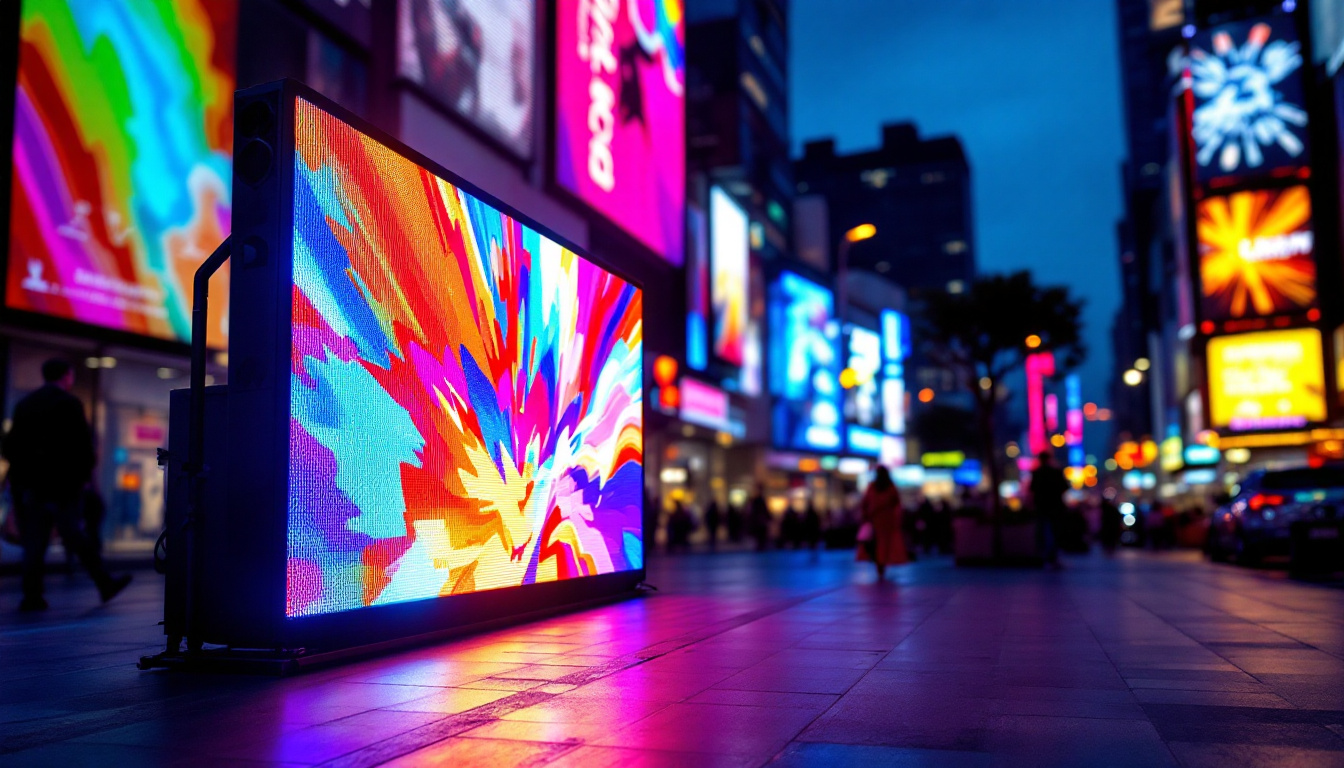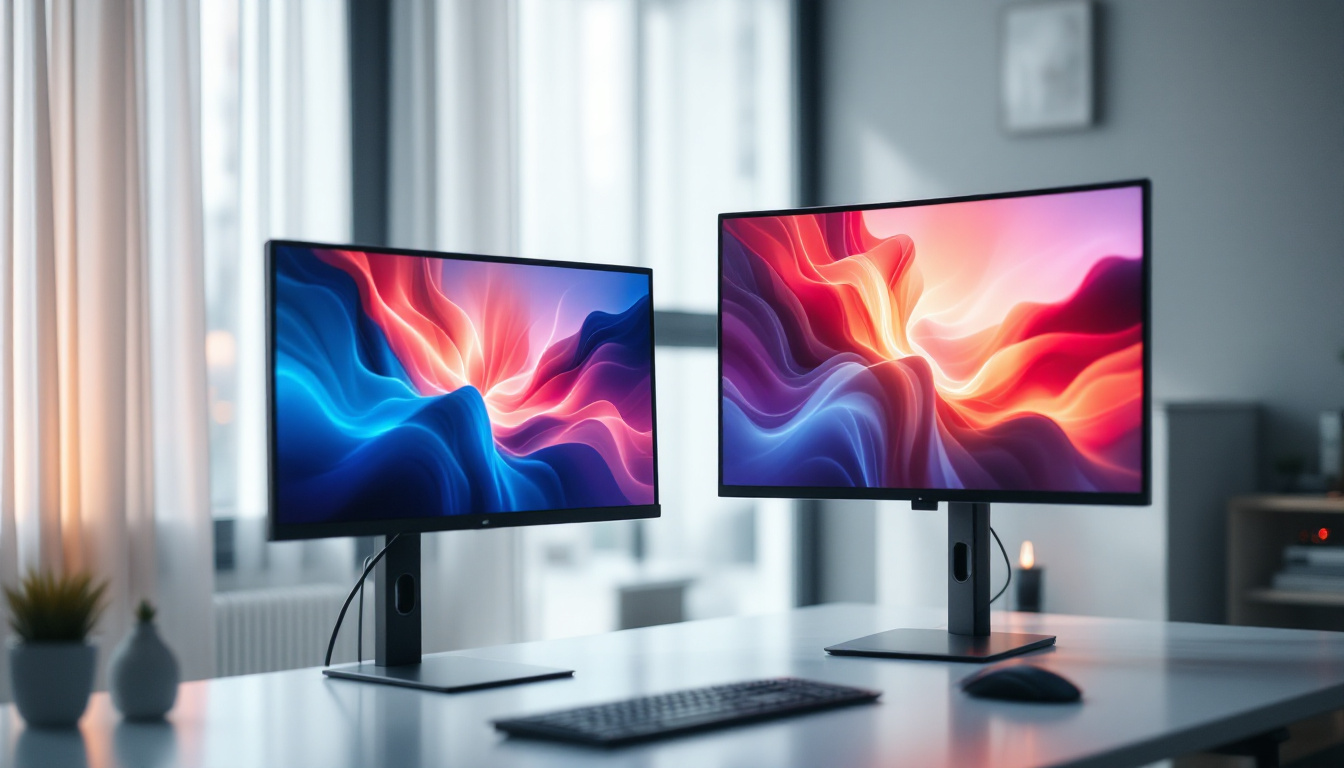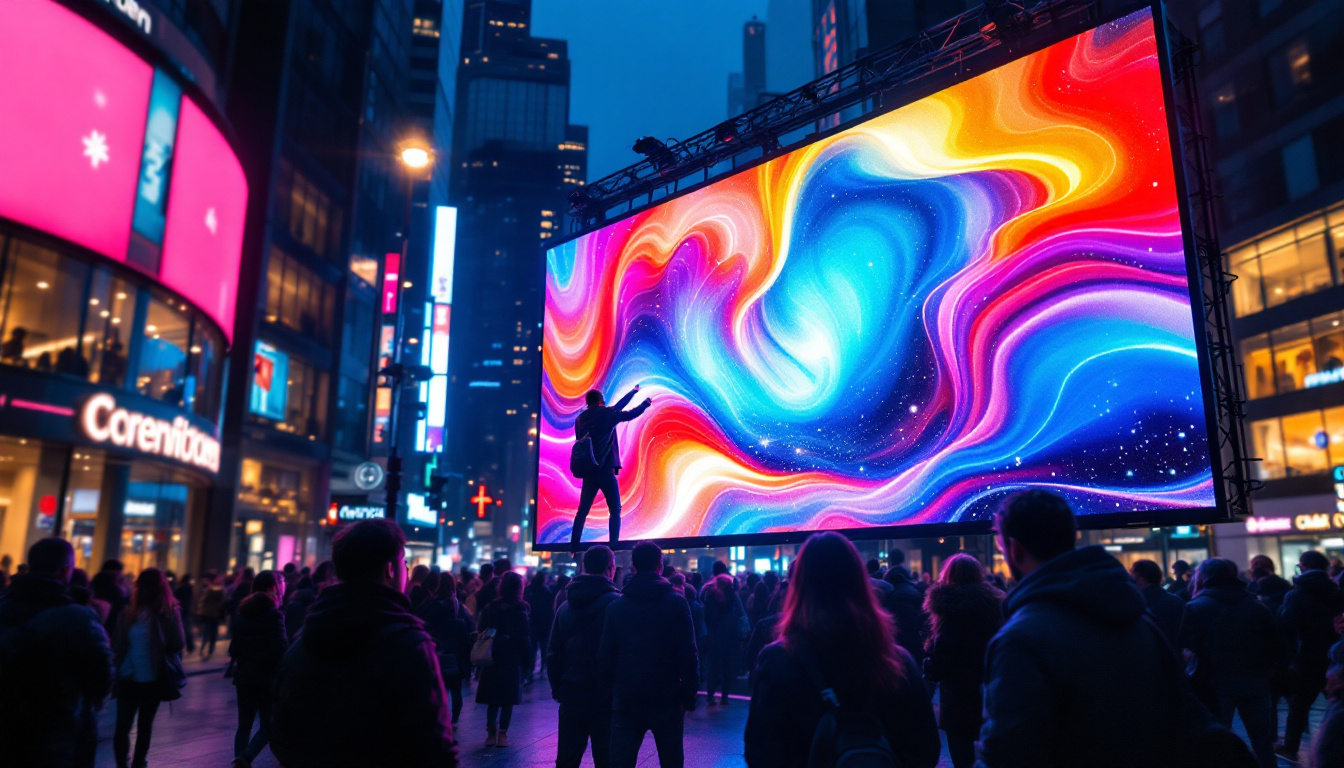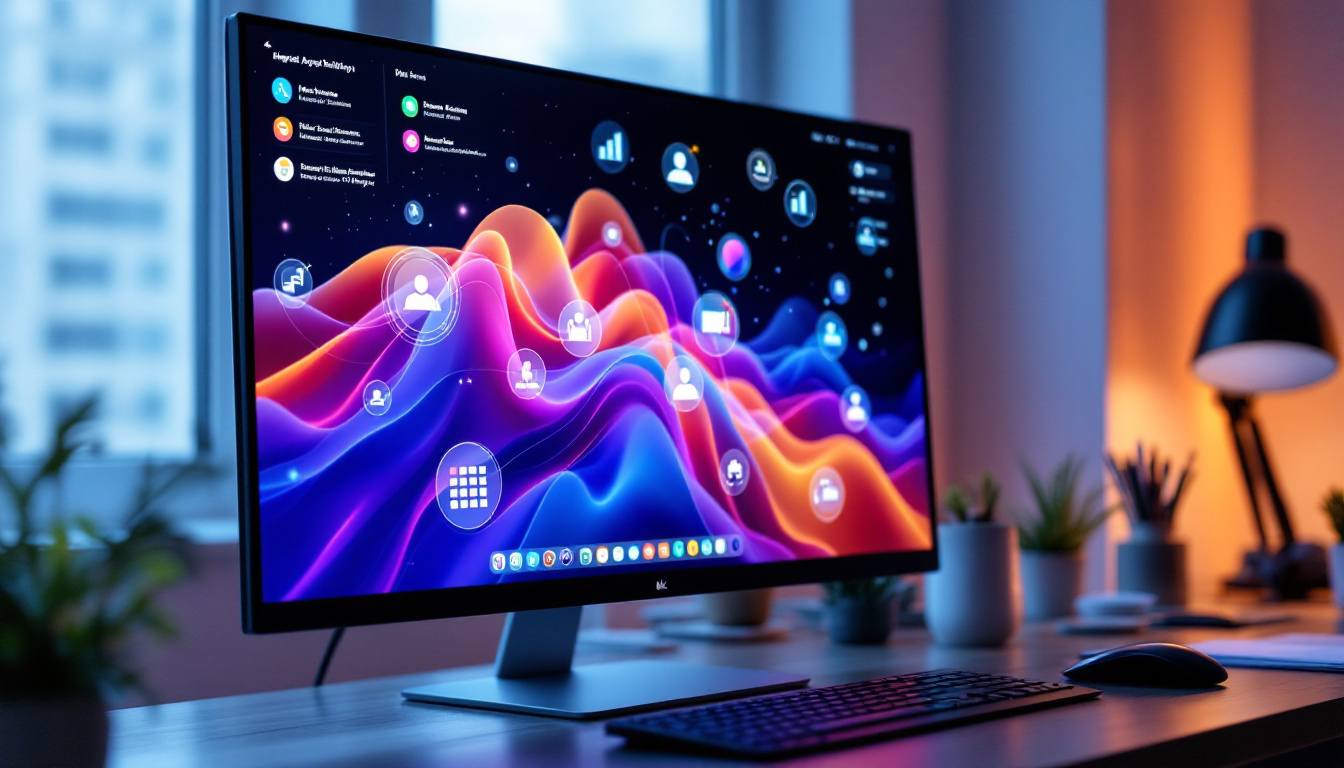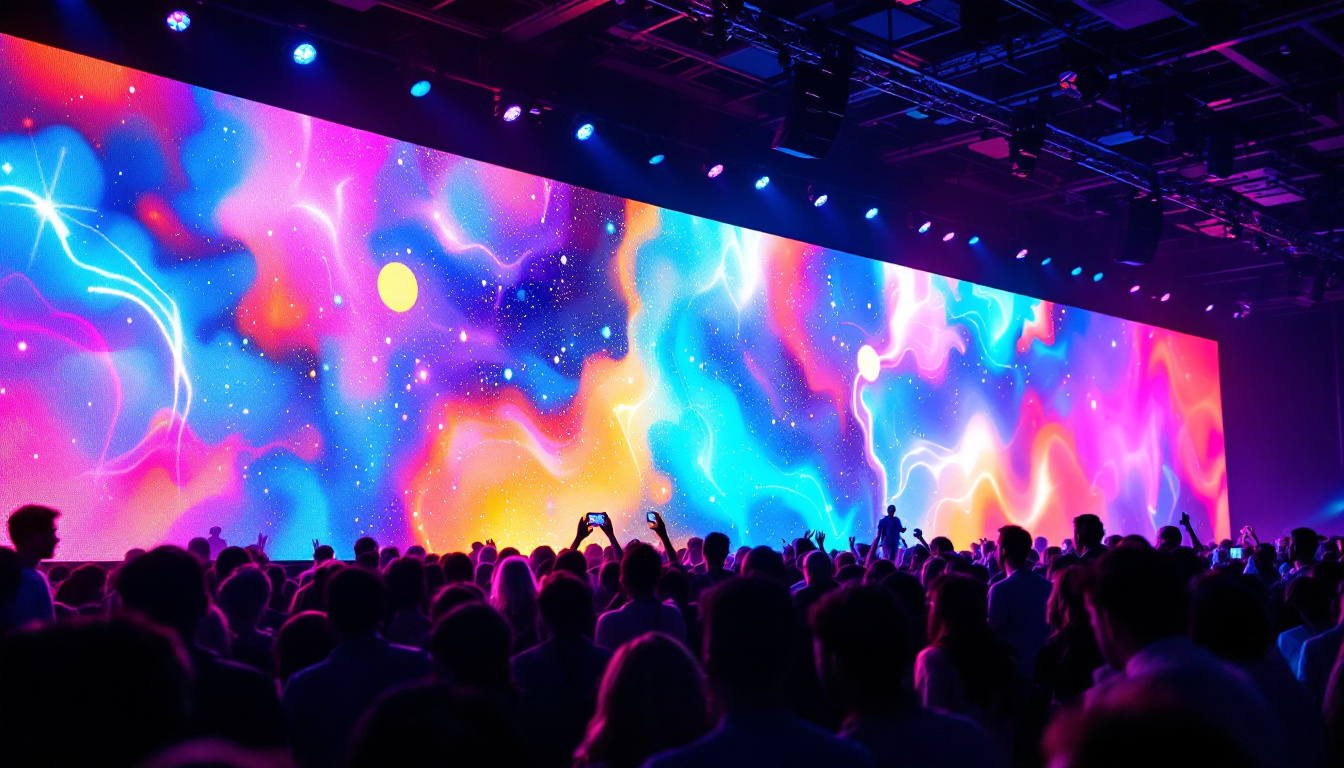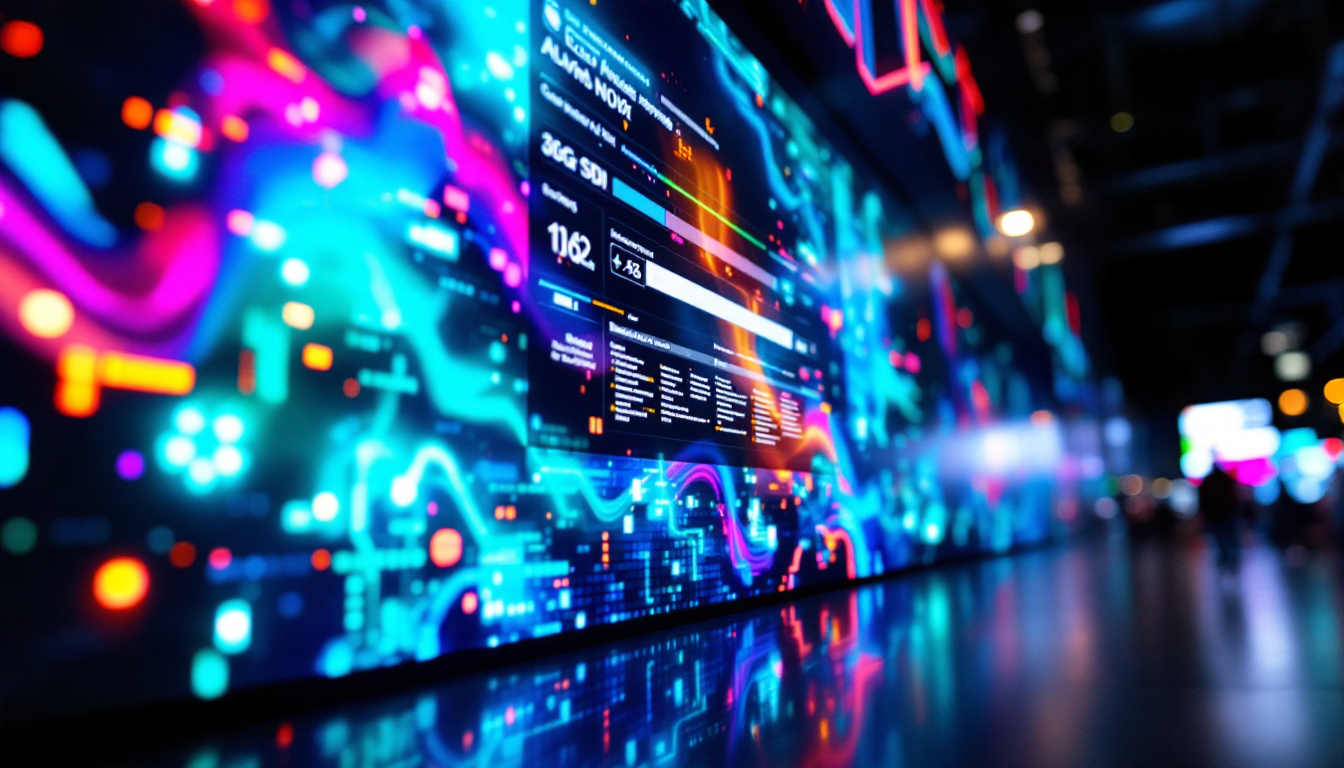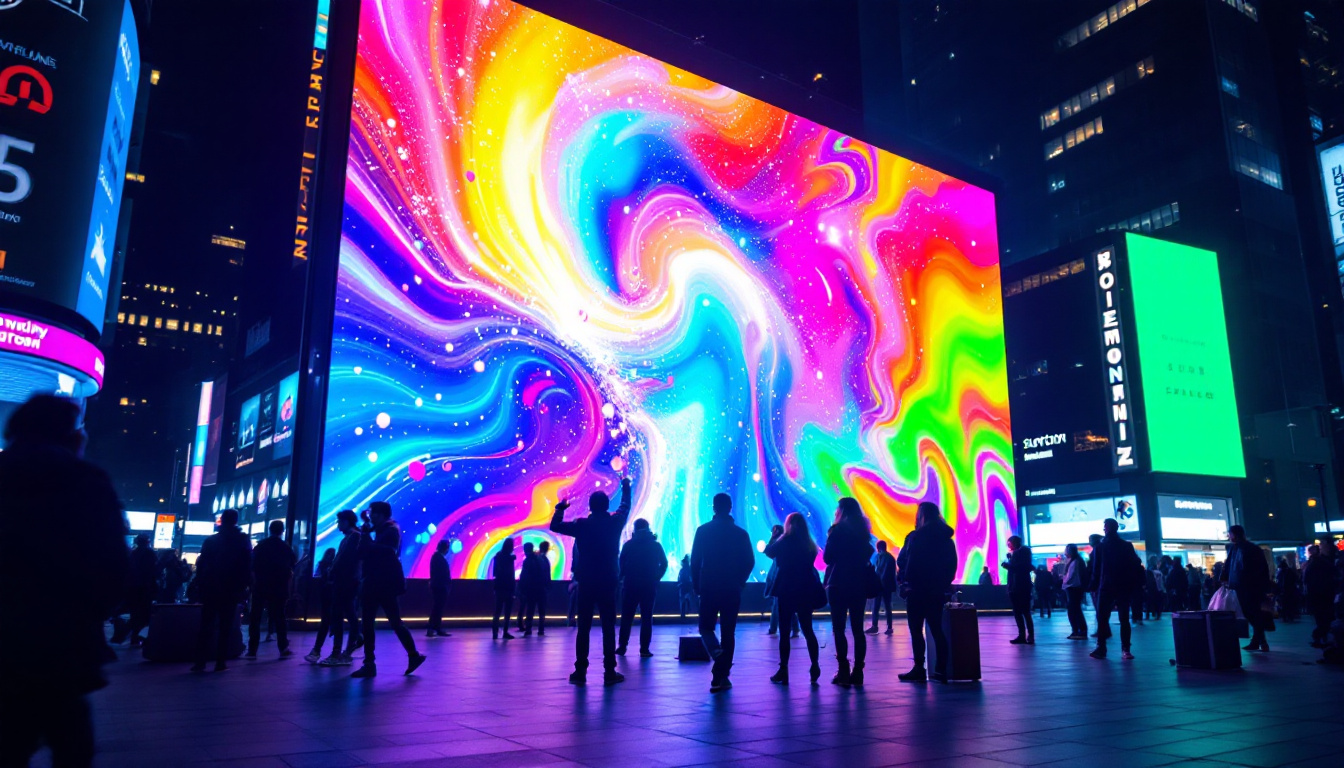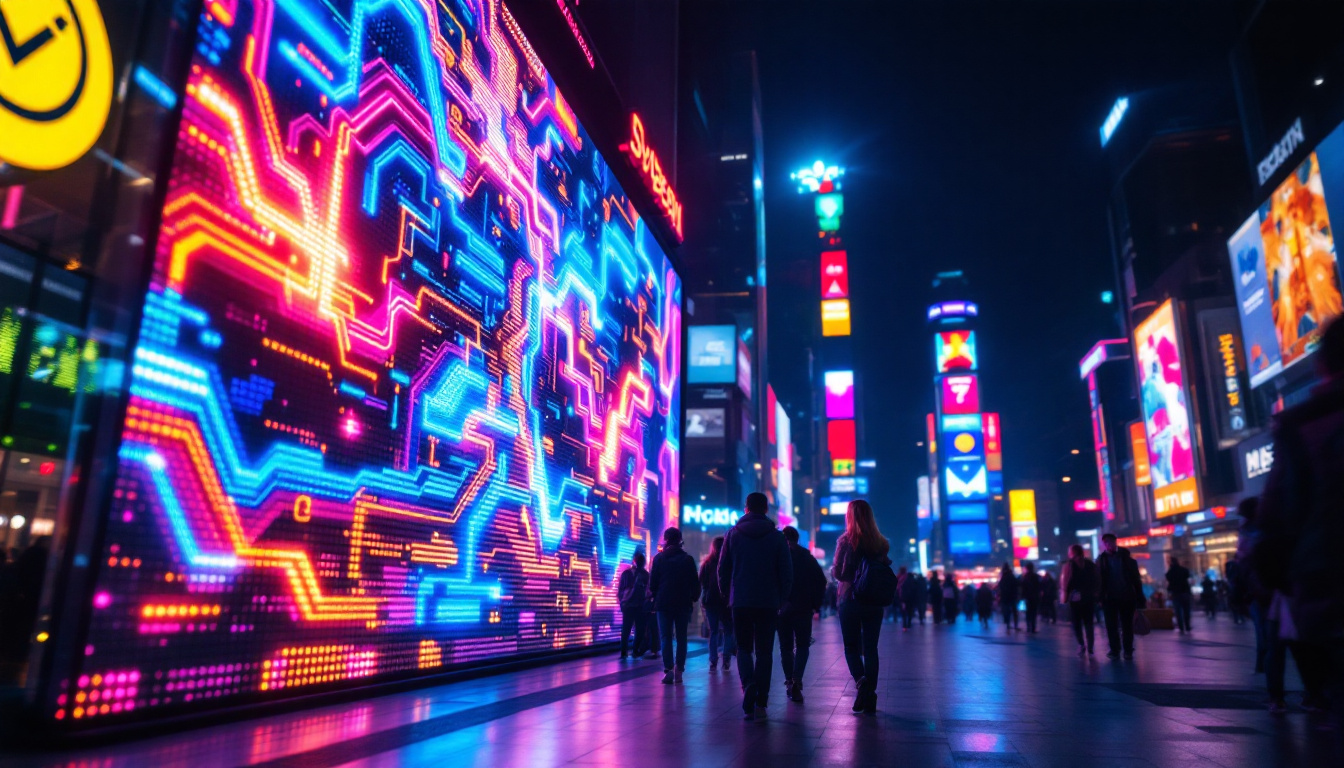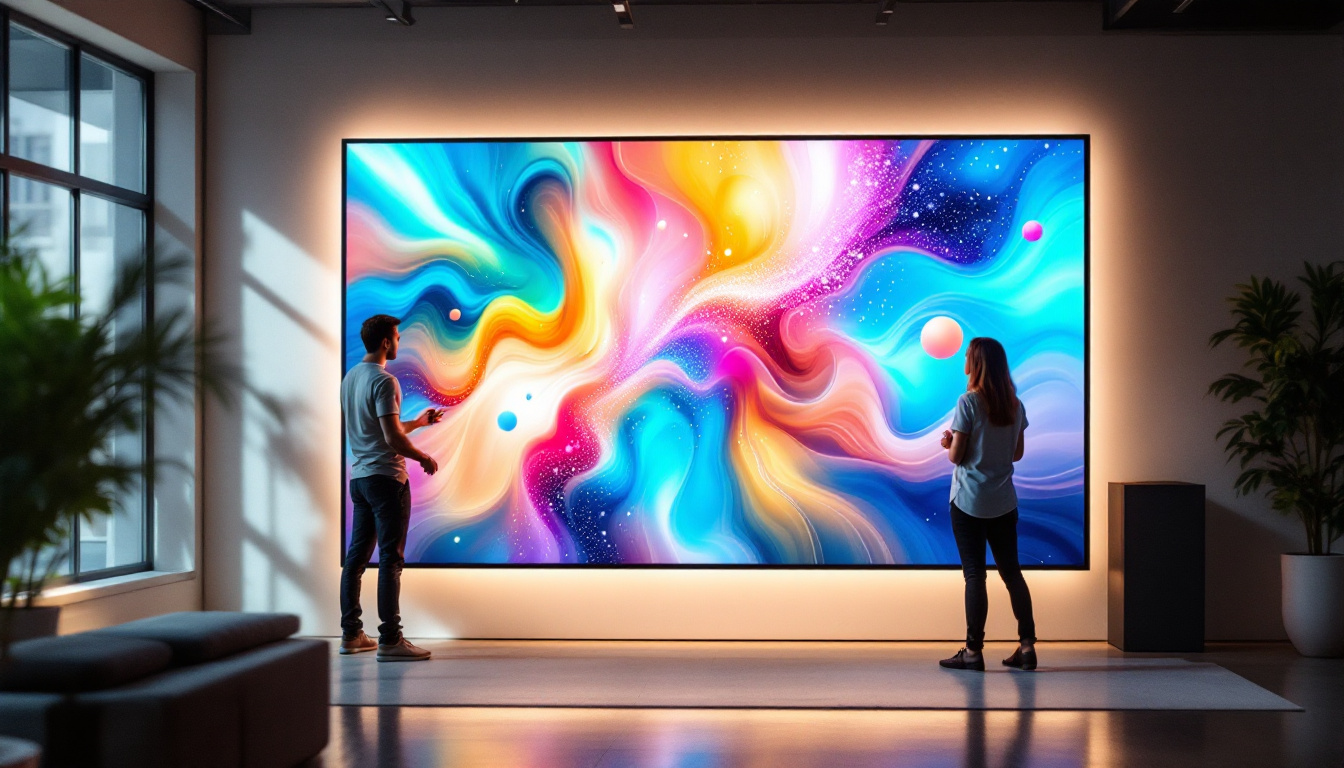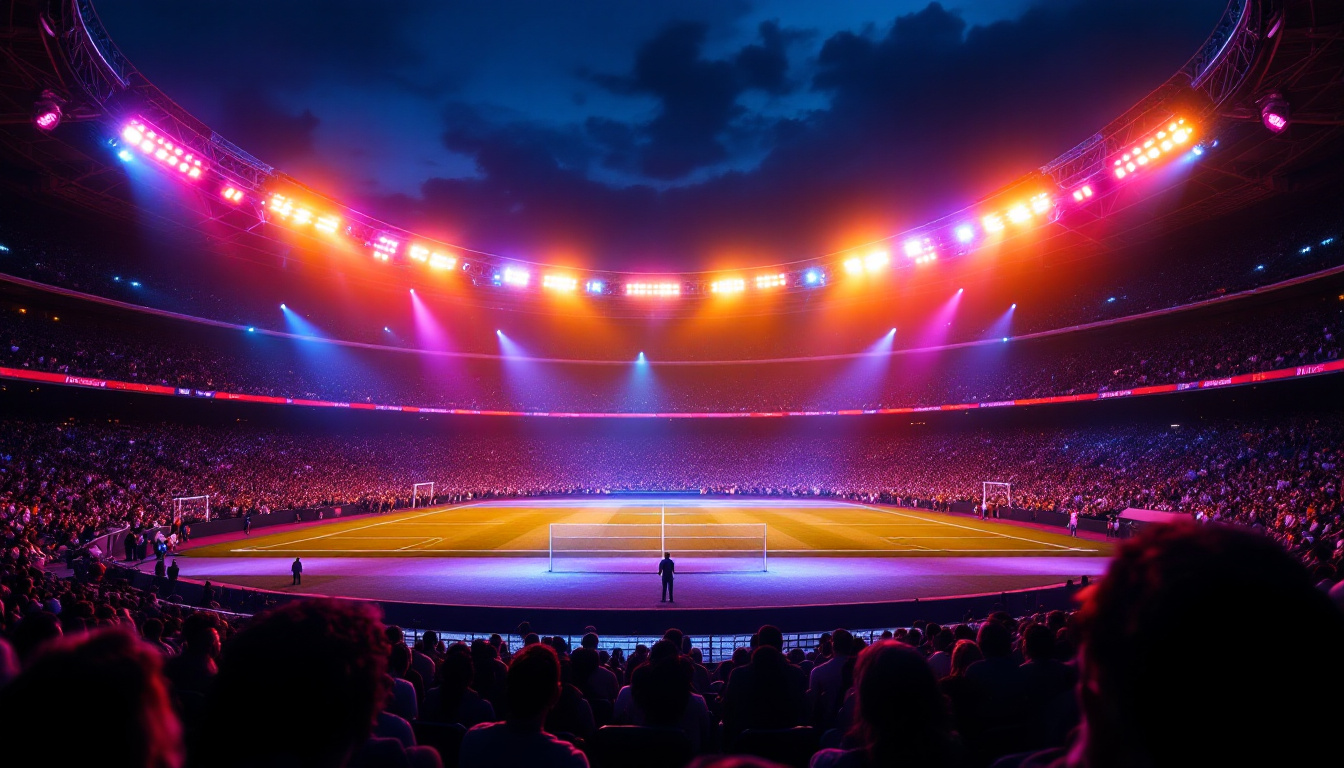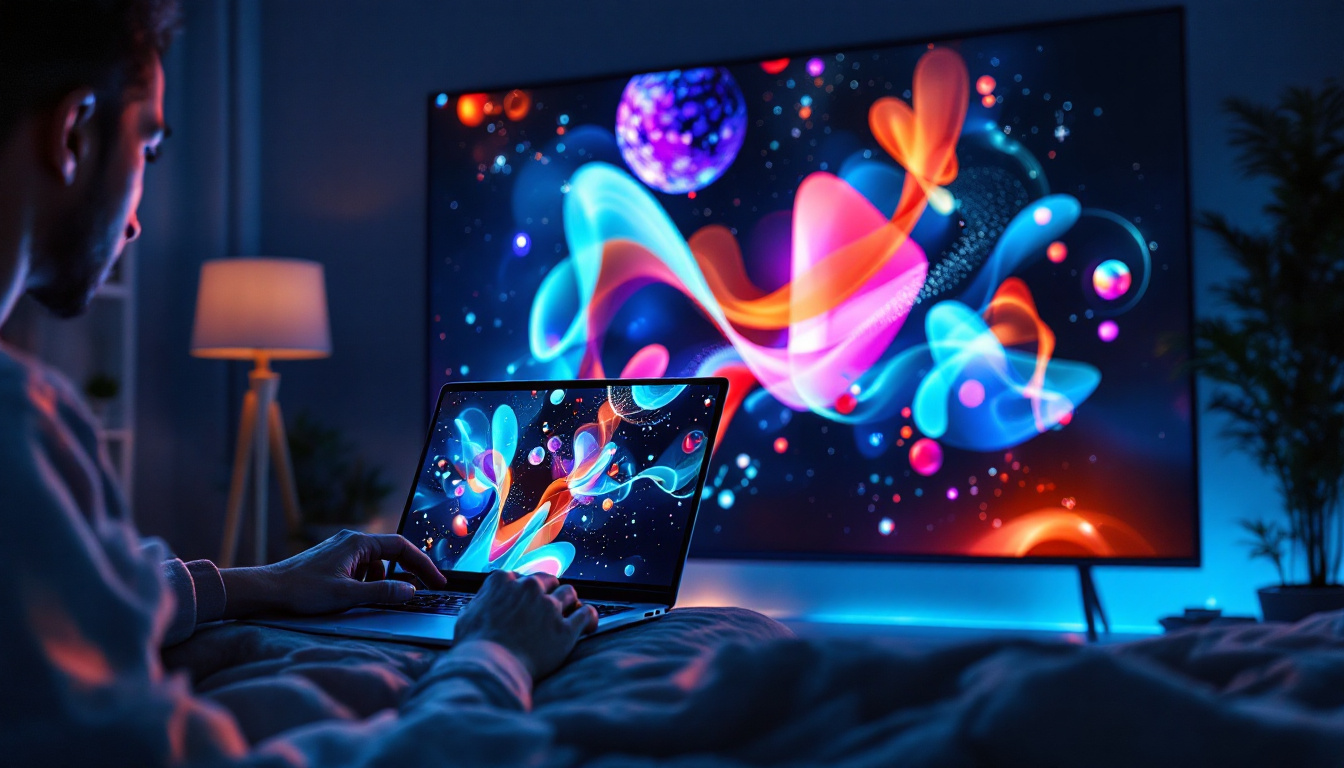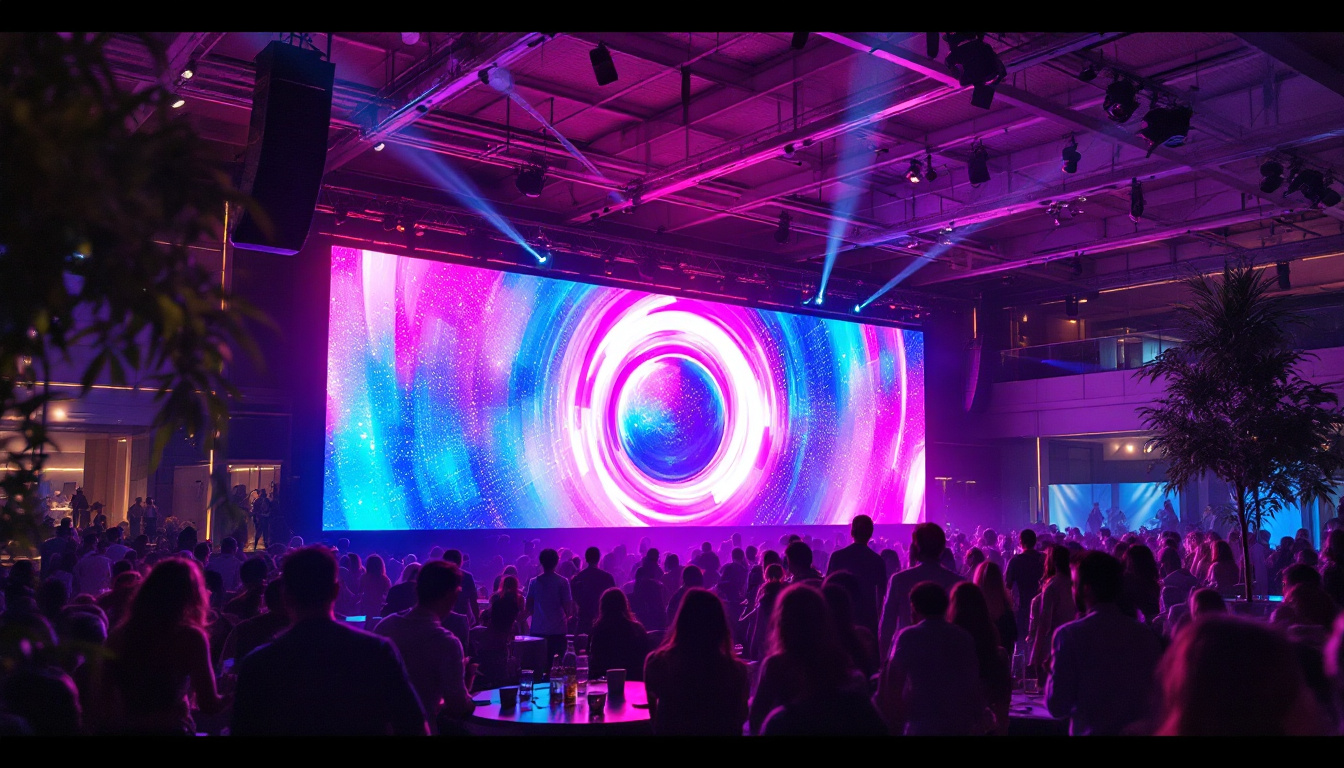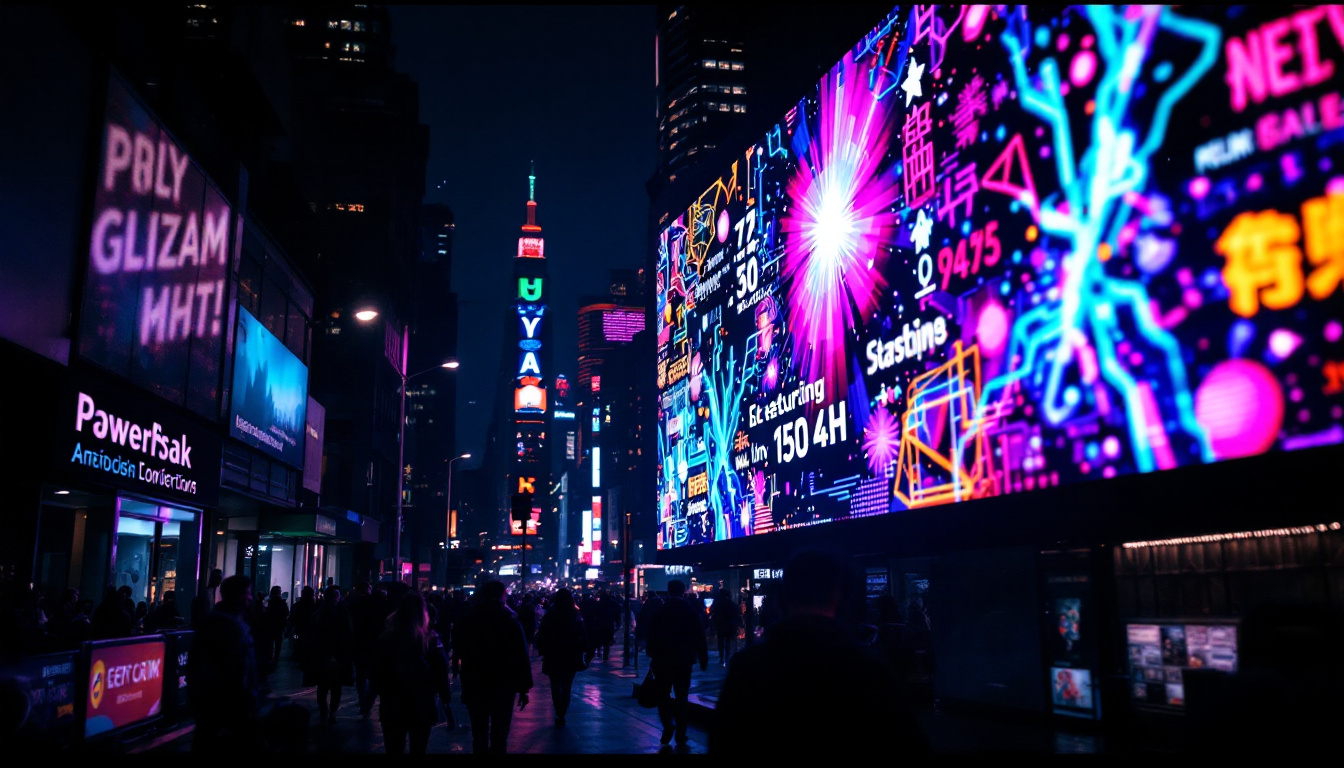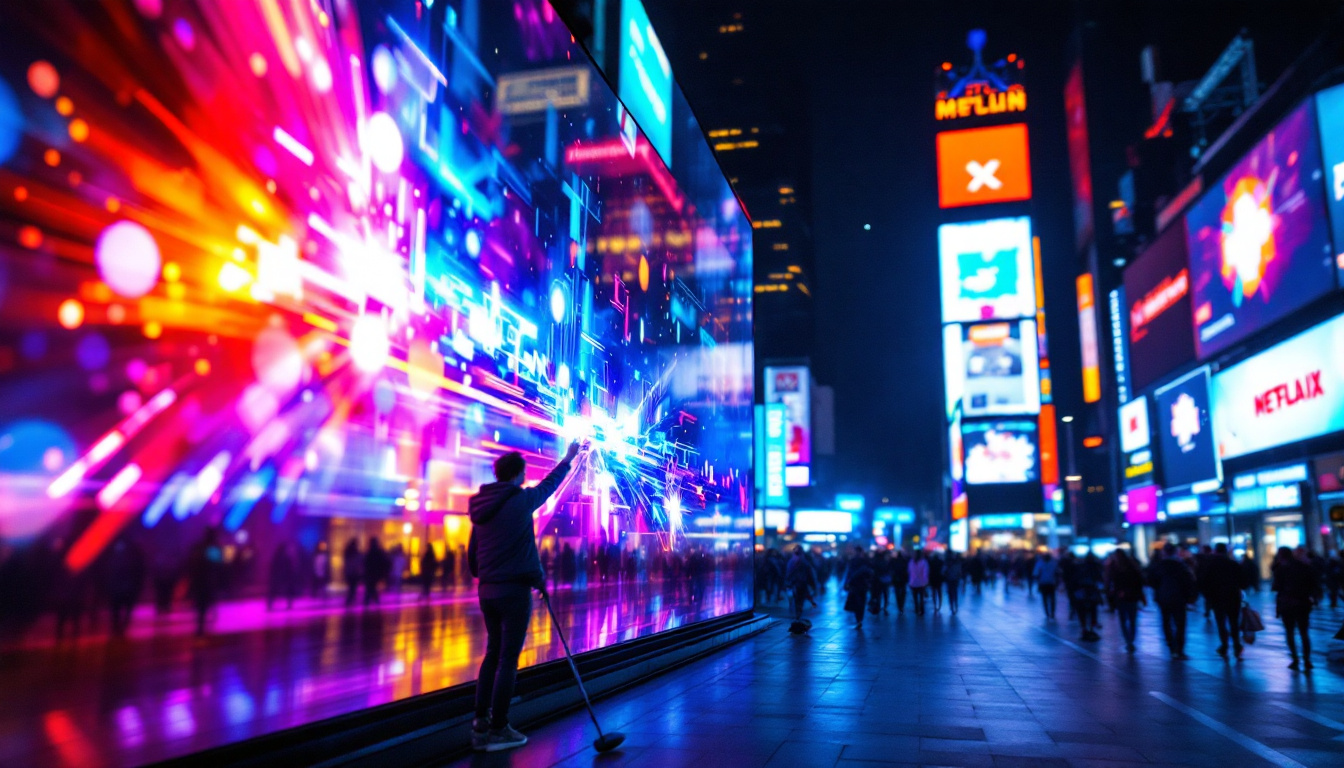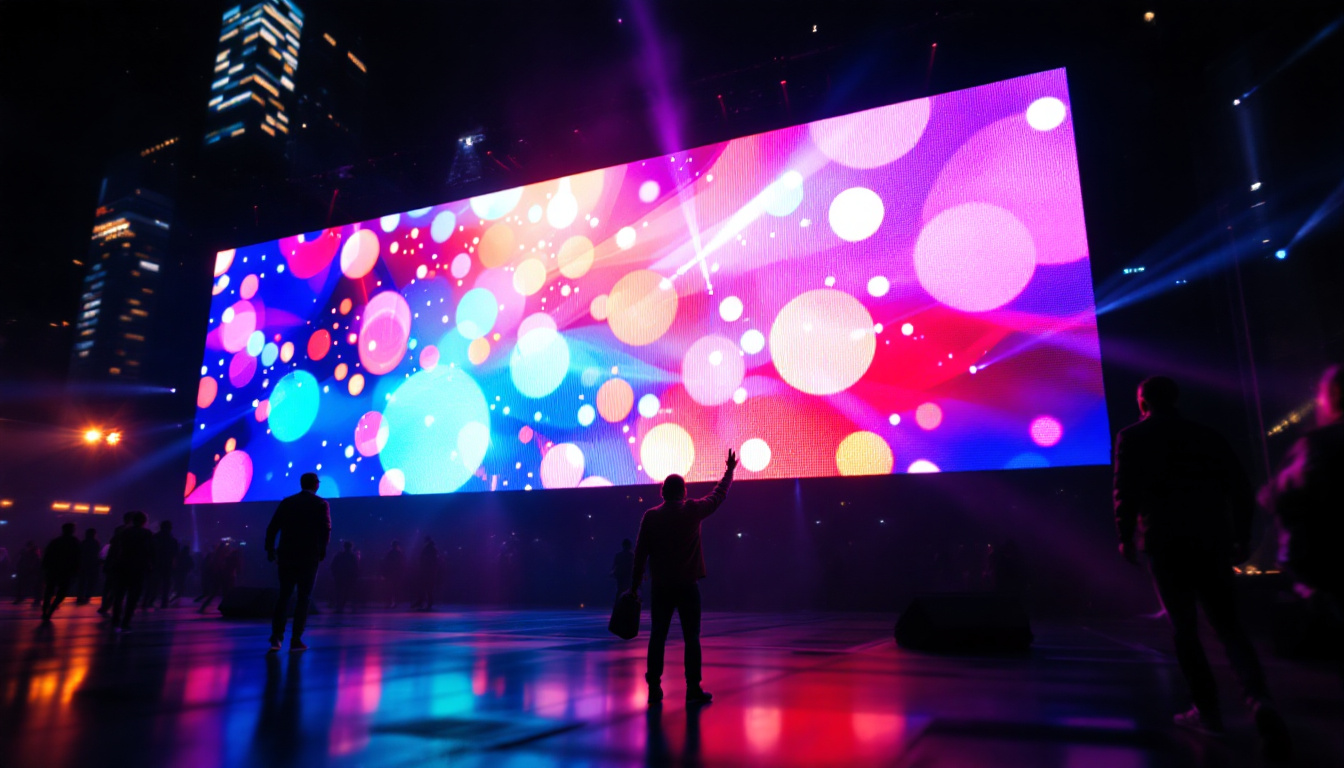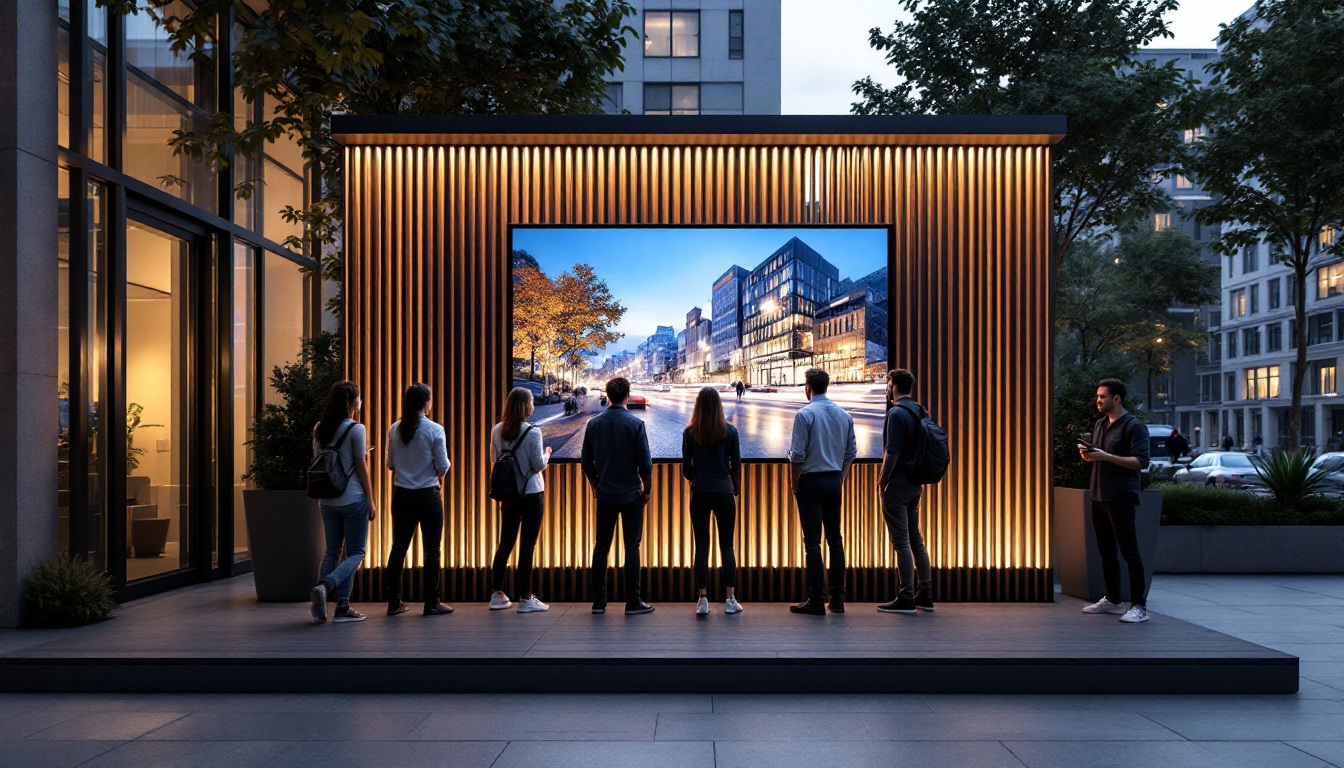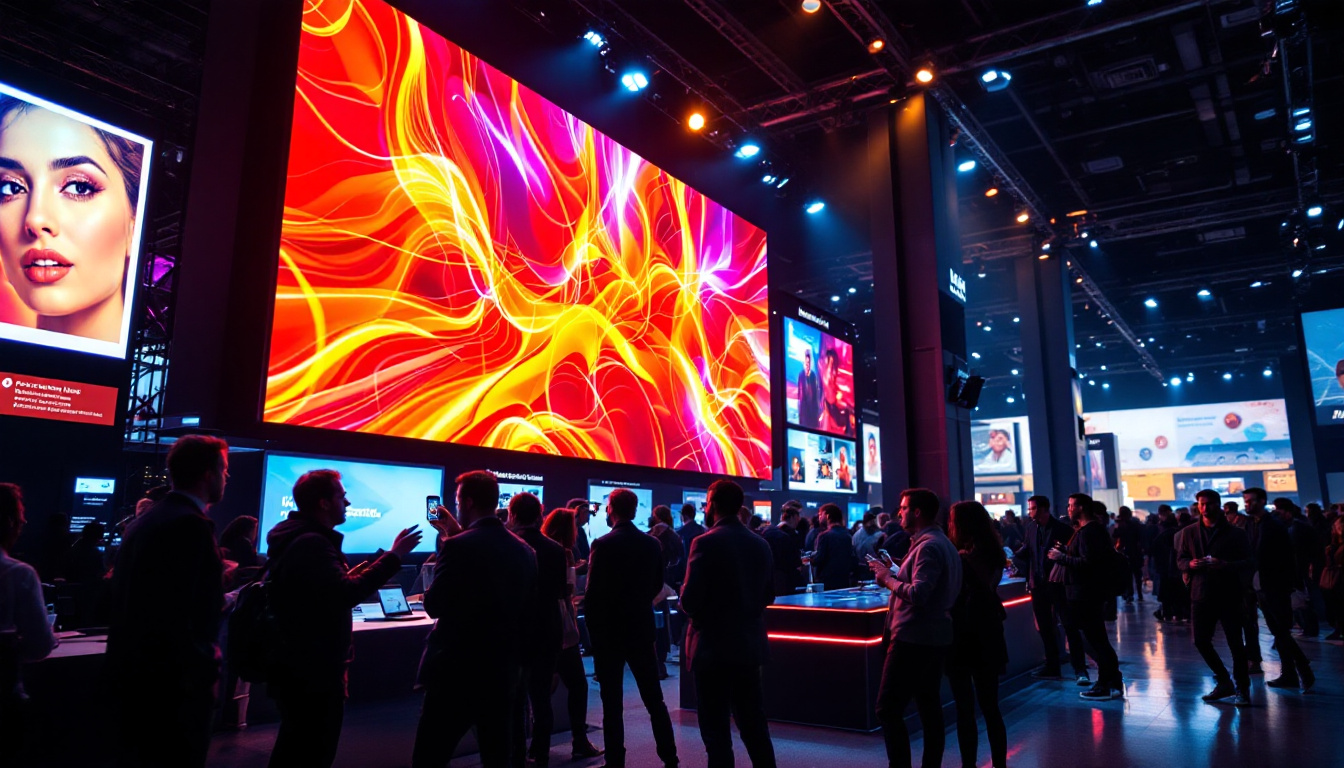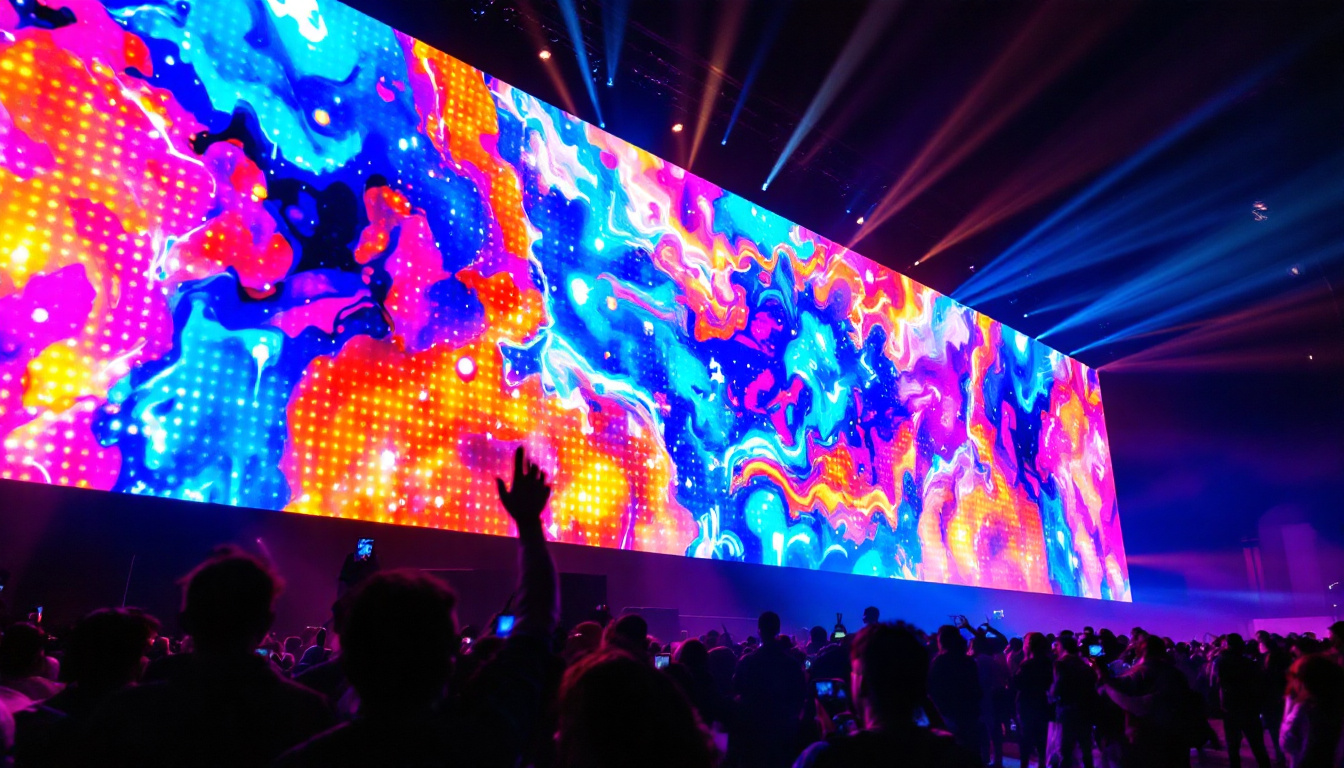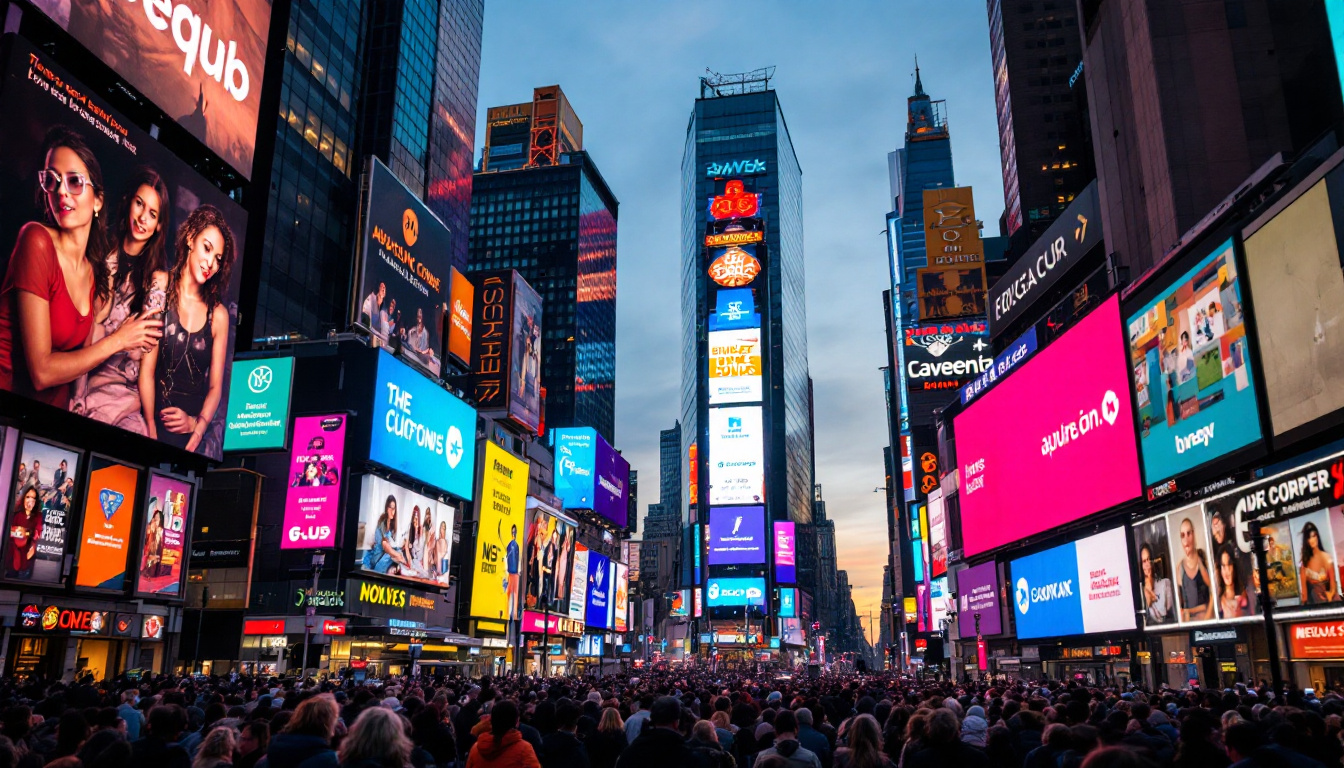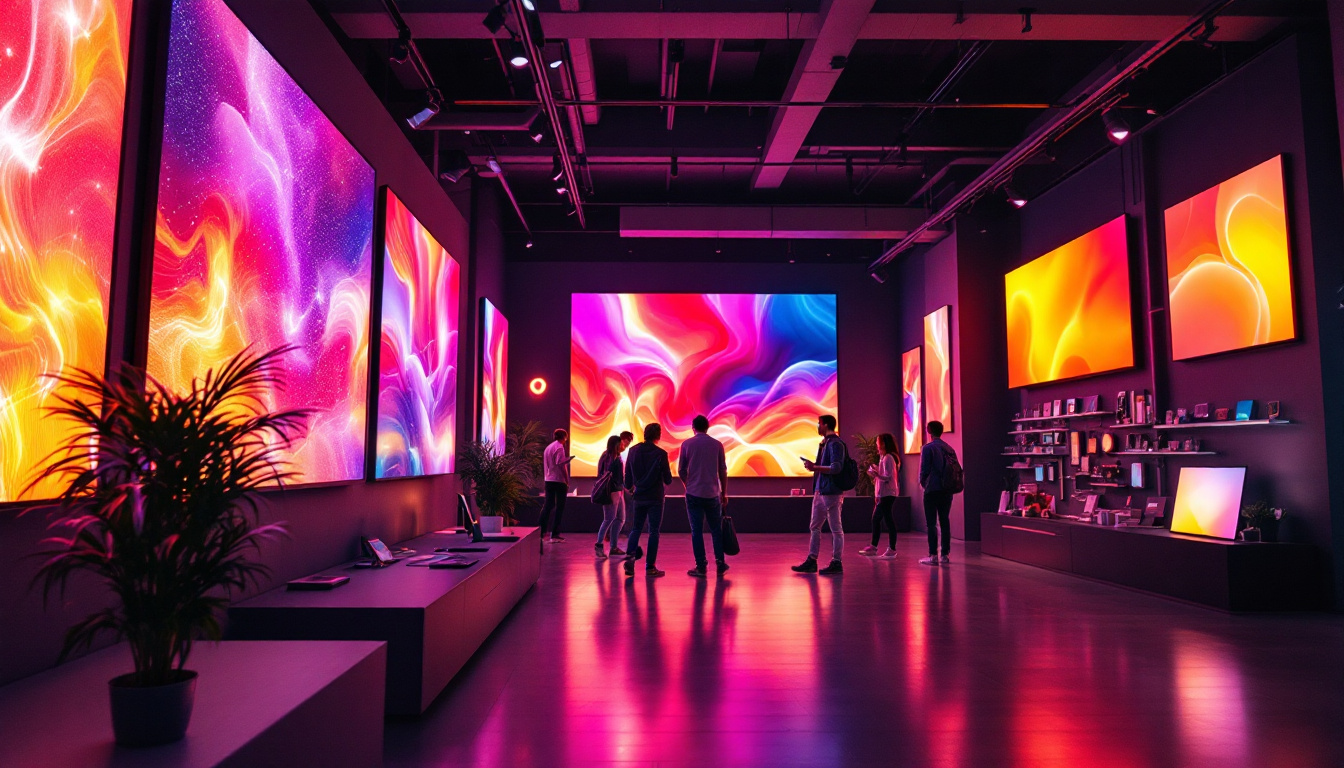In the ever-evolving world of display technology, LED displays have emerged as a dominant force, revolutionizing how information is presented across various platforms. From large-scale outdoor billboards to sleek indoor screens, LED technology offers unparalleled brightness, energy efficiency, and versatility. This article delves into the intricacies of LED displays, exploring their components, types, and applications, while also shedding light on specialized pitch variations that enhance their functionality.
Understanding LED Technology
Light Emitting Diodes (LEDs) are semiconductor devices that emit light when an electric current passes through them. Unlike traditional incandescent bulbs, LEDs are highly efficient and have a longer lifespan, making them an ideal choice for various display applications. The fundamental principle behind LED technology is the electroluminescence phenomenon, where certain materials emit light when energized.
The Basics of LED Operation
At the core of every LED display is a matrix of tiny LED bulbs, each capable of emitting different colors. These bulbs are typically arranged in a grid format, allowing for the creation of vibrant images and videos. The combination of red, green, and blue (RGB) LEDs enables the display to produce a wide spectrum of colors, which can be adjusted based on the desired output.
The operation of an LED display is controlled by a driver circuit that regulates the current flowing to each LED. This precise control allows for dynamic content to be displayed, making LED screens suitable for everything from advertisements to live event broadcasting.
Key Advantages of LED Displays
LED displays come with a myriad of benefits that contribute to their popularity in various industries. One of the most significant advantages is their energy efficiency. Compared to traditional display technologies, LED displays consume less power, leading to reduced operational costs over time.
Additionally, LED displays offer superior brightness and contrast ratios, making them easily viewable in a variety of lighting conditions. This feature is particularly beneficial for outdoor applications, where sunlight can significantly affect visibility. Furthermore, the durability of LEDs ensures that they can withstand harsh environmental conditions, making them a reliable choice for both indoor and outdoor installations.
Types of LED Displays
LED displays can be categorized into several types based on their application and configuration. Understanding these types is crucial for selecting the right display for specific needs.
Indoor LED Displays
Indoor LED displays are designed for use in controlled environments, such as conference rooms, retail spaces, and theaters. These displays typically have a higher pixel density, which allows for closer viewing distances without sacrificing image quality. The vibrant colors and sharp images produced by indoor LED displays make them ideal for presentations, advertisements, and digital signage.
Common applications for indoor LED displays include interactive kiosks, video walls, and information boards. Their ability to deliver high-resolution content in real-time makes them an essential tool for businesses looking to engage their audience effectively.
Outdoor LED Displays
Outdoor LED displays are built to withstand the elements while delivering high visibility in bright sunlight. These displays often feature a lower pixel density compared to indoor models, allowing for larger viewing distances. The robust construction of outdoor LED displays ensures they can endure rain, wind, and extreme temperatures, making them suitable for billboards, sports arenas, and public transportation systems.
With advancements in technology, many outdoor LED displays now come equipped with features such as weatherproofing and anti-glare coatings, further enhancing their performance in challenging conditions.
Fine Pitch LED Displays
Fine pitch LED displays represent a significant advancement in LED technology, offering higher pixel densities and sharper image quality. These displays are characterized by their smaller pixel pitch, which refers to the distance between the centers of two adjacent pixels. A smaller pixel pitch allows for closer viewing distances without compromising image clarity.
Fine pitch LED displays are particularly popular in environments where high-resolution content is essential, such as control rooms, broadcast studios, and high-end retail spaces. Their ability to produce detailed images and videos makes them an attractive option for businesses aiming to create immersive experiences for their customers.
Specialized Pitch Variations
Within the realm of LED displays, specialized pitch variations cater to specific needs and applications. Understanding these variations can help businesses make informed decisions when selecting an LED display.
Ultra-Fine Pitch Displays
Ultra-fine pitch displays take the concept of fine pitch to the next level, featuring pixel pitches as small as 1mm or less. These displays are designed for environments where image quality is paramount, such as high-end retail, corporate lobbies, and broadcast studios. The ultra-fine pitch allows for incredibly detailed images, making them ideal for showcasing intricate graphics and videos.
Despite their higher cost, the investment in ultra-fine pitch displays can yield significant returns in terms of customer engagement and brand perception. The clarity and vibrancy of the content displayed can captivate audiences, making it a worthwhile addition to any marketing strategy.
High Brightness Displays
High brightness LED displays are specifically engineered for outdoor use in bright sunlight. These displays feature enhanced brightness levels, often exceeding 5,000 nits, ensuring that content remains visible even in direct sunlight. high brightness displays are commonly used for digital billboards, transportation signage, and outdoor advertising.
In addition to their brightness, many high brightness displays also incorporate advanced cooling systems to prevent overheating and ensure optimal performance. This makes them a reliable choice for businesses looking to maximize visibility in challenging lighting conditions.
Transparent LED Displays
Transparent LED displays represent a unique innovation in display technology, allowing for the combination of digital content with the physical environment. These displays consist of transparent panels that can be installed in windows or storefronts, enabling businesses to showcase advertisements while still allowing light to pass through.
This technology is particularly effective for retail applications, as it attracts customers’ attention without obstructing their view of the products inside. Transparent LED displays can create a striking visual impact, enhancing the overall shopping experience and driving foot traffic.
Applications of LED Displays
The versatility of LED displays has led to their widespread adoption across various industries. From advertising to entertainment, the applications of LED technology are virtually limitless.
Advertising and Marketing
One of the most prominent applications of LED displays is in advertising and marketing. Businesses utilize LED screens to deliver dynamic content that captures the attention of potential customers. Whether it’s a large billboard on a busy street or a digital signage display in a retail store, LED technology allows for eye-catching visuals that can be updated in real-time.
The ability to display videos, animations, and interactive content makes LED displays an effective tool for engaging audiences and promoting products. Additionally, targeted advertising can be implemented, allowing businesses to tailor their messages based on demographics and location.
Entertainment and Events
LED displays have transformed the entertainment industry, providing stunning visuals for concerts, sporting events, and theatrical performances. Large-scale LED screens are commonly used in arenas and stadiums to enhance the spectator experience, displaying live feeds, graphics, and advertisements.
In addition to outdoor events, LED technology is also prevalent in indoor venues, where video walls and stage backdrops create immersive environments for audiences. The flexibility of LED displays allows for creative staging and dynamic content, making them a staple in modern entertainment.
Corporate and Educational Use
In corporate settings, LED displays are utilized for presentations, meetings, and training sessions. Their high-resolution capabilities ensure that all participants can view content clearly, regardless of their position in the room. Video conferencing systems often integrate LED displays to enhance communication and collaboration among remote teams.
Educational institutions also benefit from LED technology, using displays in classrooms and auditoriums to facilitate interactive learning experiences. The ability to present multimedia content in real-time engages students and enhances comprehension, making LED displays a valuable addition to modern education.
Choosing the Right LED Display
Selecting the appropriate LED display involves considering several factors, including the intended application, viewing distance, and budget. Businesses must assess their specific needs to ensure they invest in a display that meets their requirements.
Assessing Viewing Distance
One of the critical considerations when choosing an LED display is the viewing distance. For applications where viewers will be close to the screen, such as indoor environments, a finer pixel pitch is essential to maintain image clarity. Conversely, outdoor displays may require a coarser pixel pitch, as viewers are typically positioned further away.
Understanding the viewing distance will help businesses select a display that provides optimal image quality without unnecessary expenditure on features that may not be needed.
Budget Considerations
Budget is another crucial factor in the decision-making process. While LED displays can be a significant investment, the long-term benefits often outweigh the initial costs. Businesses should evaluate their budget against the expected return on investment, considering factors such as energy savings, maintenance costs, and the potential for increased customer engagement.
Additionally, exploring financing options or leasing arrangements can make high-quality LED displays more accessible for businesses with budget constraints.
Future-Proofing Your Investment
As technology continues to advance, businesses should consider future-proofing their LED display investments. Opting for displays with modular designs or upgradeable components can extend the lifespan of the technology and ensure compatibility with future advancements.
Furthermore, investing in displays that support various content formats and connectivity options will enhance flexibility and adaptability, allowing businesses to evolve their marketing strategies as needed.
Conclusion
LED displays have become an integral part of modern communication, offering unparalleled brightness, versatility, and efficiency. With various types and specialized pitch variations available, businesses can select displays that cater to their specific needs and applications. As technology continues to evolve, the potential for LED displays will only expand, promising exciting opportunities for engagement and innovation in the future.
Understanding the intricacies of LED technology, its applications, and the factors influencing display selection is essential for businesses aiming to leverage this powerful tool. By making informed decisions, organizations can enhance their visibility, engage their audiences, and ultimately drive success in an increasingly competitive marketplace.
Discover LumenMatrix’s Innovative LED Solutions
Ready to elevate your visual communication with cutting-edge LED technology? Look no further than LumenMatrix, a pioneer in crafting LED display modules that transform your brand’s presence and captivate your audience. From vibrant Indoor and Outdoor LED Wall Displays to dynamic Vehicle and Sports LED Displays, and even bespoke solutions like Custom and All-in-One LED Displays, LumenMatrix has the perfect solution to meet your needs. Experience the future of digital signage and create unforgettable visual experiences. Check out LumenMatrix LED Display Solutions today and step into a world of unparalleled clarity and engagement.

